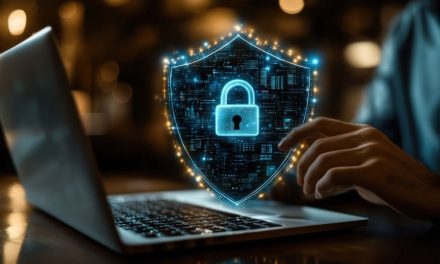Small and Medium-Sized Businesses (SMBs) can defend against cyber threats by focusing on a prioritized, defense-in-depth strategy that combines foundational security controls, continuous employee training, and the smart use of affordable technology.
As of September 5, 2025, for the thousands of SMBs that form the backbone of Pakistan’s economy, the belief that they are “too small to be a target” is a dangerous and outdated myth. In reality, SMBs are the preferred target for many cybercriminals, who see them as a soft target with valuable data and weak defenses.
The good news is that building a strong defense does not require a massive budget. It requires a commitment to mastering the basics. Here is a practical guide for how SMBs in Rawalpindi and across Pakistan can protect themselves.
1. The Foundational Layer: Secure Your Logins
Your login credentials are the keys to your business. Protecting them is your single most important priority.
- Mandate the Use of a Password Manager: The biggest risk is employees reusing passwords across different services. A single breach at an unrelated website can lead to a compromise of their work account.
- Action: Subscribe to a business plan for a reputable password manager. Mandate that all employees use it to generate a long, unique, and complex password for every single online service they use for work.
- Enforce Multi-Factor Authentication (MFA): This is Non-Negotiable. MFA is your most powerful shield against account takeover.
- Action: Enable and enforce MFA on all critical accounts, especially email (Microsoft 365/Google Workspace), cloud services, and any remote access (VPN) systems. This single control stops the vast majority of attacks that rely on stolen passwords.
2. Build Your Human Firewall: Employee Training
Your employees are your first line of defense, but they can also be your weakest link. An investment in their training has the highest ROI in all of cybersecurity.
- The Threat: Phishing emails are the number one way that malware and ransomware get into a business network.
- The Defense: Create a culture of healthy skepticism.
- Action: Implement a continuous security awareness training program. This should not be a one-time event. Use short, regular training modules to keep security top-of-mind.
- Action: Conduct simulated phishing tests. Regularly sending your own, safe phishing emails to your staff is the most effective way to teach them how to spot real-world threats and to build the habit of reporting suspicious messages.
3. Master the Basics: Essential Cyber Hygiene
Many devastating breaches are caused by a failure to follow simple, foundational security practices.
- Keep Everything Updated: Outdated software has known vulnerabilities that hackers actively exploit.
- Action: Enable automatic updates on all your computers and software wherever possible. Have a regular, weekly process to manually check for and apply security patches to all your critical systems.
- Back Up Your Data (The Right Way): A robust backup is your only lifeline in a ransomware attack.
- Action: Follow the 3-2-1 rule: keep 3 copies of your data, on 2 different types of media, with 1 copy stored offline or in a separate, isolated cloud account. It is critical that one backup is “air-gapped” or “immutable” so that the ransomware cannot encrypt your backups as well. Regularly test your backups to make sure you can actually restore from them.
4. Leverage Affordable Technology
You don’t need an enterprise-grade security budget to build a strong defense.
- Secure Your Network:
- Action: Change the default administrator password on your office Wi-Fi router. Use strong WPA3/WPA2 encryption and create a separate guest network for visitors, keeping them off your main business network.
- Use a Business-Grade Firewall: The basic firewall included in your router is not enough. A next-generation firewall (NGFW) is an affordable and essential investment for any business.
- Protect Your Endpoints: Ensure every computer has a reputable, business-grade antivirus and anti-malware solution. Consider investing in an Endpoint Detection and Response (EDR) solution, which provides more advanced, behavior-based protection against modern threats.
By focusing on these practical and high-impact areas, any SMB in Pakistan can dramatically reduce its risk and build a resilient security posture that protects its data, its finances, and its future.





